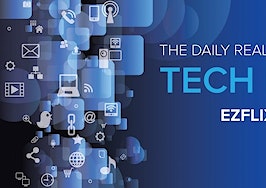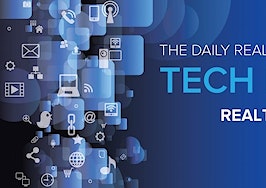Have suggestions for products that you’d like to see reviewed by our real estate technology expert? Email Craig Rowe.
The pitch
If you do any marketing at all, email needs to be a part of it.
Despite what you may have heard or think you heard, email marketing is far from dead. In fact, it’s become a must for consumer brands. Turns out a well-written subject line is one of industry’s best sales tools, whether selling off road tires or smart watches.
Email is also great for general branding, like making company announcements, introducing new employees or sharing a behind-the-scenes video. It’s also one of the most efficient dollar-per-customer marketing tools of any media mix.
That being said, have you heard of MailChimp?
The sale
On top of having the cutest company icon on the Internet, MailChimp is one of its most popular email marketing tools. It’s the second organic return on Google below news when you enter “email marketing.”
Upon login, users are presented with the stats from a recent campaign, or email. You have all the message’s basics, like when it was sent and to how many people. There are nice bar graphs and a click-thru rate report.
When you establish an account, MailChimp asks you about your industry. This is so that when you send a message, they can share with you the real estate industry’s average open and click-thru rates.
Your dashboard also very clearly summarizes your last five campaigns. Use this to measure what subject lines worked and what message had the most impact. Audience measurement has long been one of email marketing’s highest and best uses.
We can now meter exactly what interests an audience, many of which volunteered their inboxes for you to sell them a property or critical brand message. Email marketing is much more powerful than most realize, and we neglect it as some sort of half-hearted part of our CRM’s capabilities.
MailChimp makes email easier than Constant Contact and Bronto. I’ve used all of them. (However, Bronto is now much more than an email marketing tool. I was one of its very first users, circa 2002.)
I love MailChimp’s simplified cousin, TinyLetter. But it’s much more about personal messaging than sales and marketing.
You can sort your last five campaigns according to campaign opens, clicks and specific clicked links. These easy-sort features offer a clean look at what listings in your newsletter may be earning the most interest. Maybe those clicks are the result of the pictures used, or maybe they’re price- or ZIP code-driven. These are the valuable marketing data you can extract from just a few emails.
Building a campaign with MailChimp is as easy as logging in. You have several options. Send a simple text campaign, or add flair with HTML. You can blast a message to an RSS feed and also segment your message to separate lists, the latter sounding more complex than MailChimp makes it.
You have a number of templates from which to choose each time or you can select a saved version. Creating messages is a drag-and-drop effort; text is easy to add, paste and edit. Pictures and links all flow easily into the user experience.
Multiple draft and send prompts make it almost impossible for you to send a message before it’s ready. Still, make sure you always test a message.
MailChimp is free, and that version’s features are what I discussed here. A paid upgrade includes “goal tracking,” a form of user radar that monitors movement on your site after message click-thrus.
The close
MailChimp is simple and fun to use. All aspects of user engagement are conversational, even the message that tells you about unsubscribers. (It happens.)
MailChimp has risen to the top of its tree for a reason. If you need to email and your CRM (customer relationship manager) isn’t cutting it, this is probably your answer. In fact, even if you’re happy with your CRM’s email client, give this monkey’s tail a tug.
Do you use MailChimp? What do you think? Leave a comment and let us know!
Do you have a product for our tech expert to review? Email Craig Rowe.











